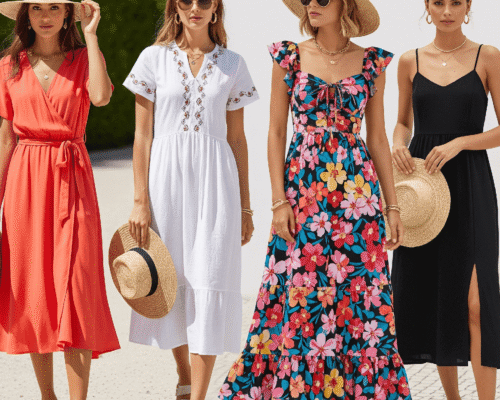Building a versatile summer dresses wardrobe is the key to feeling confident and stylish all…
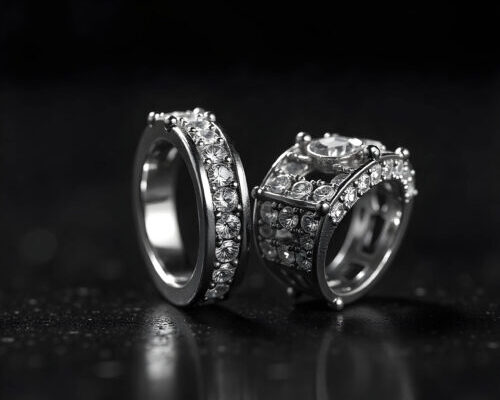
Essential Lighting Tips for Jewelry Photography
Capturing stunning jewelry photography requires a deep understanding of lighting techniques. The right lighting can make or break the visual appeal of your jewelry, and a poor lighting setup can lead to dull, unflattering results. In this article, we’ll explore the essential lighting tips for jewelry photography, from the basic’s tips of lighting sources to advanced techniques for accentuating details.
Essential Lighting for Stunning Jewelry Shots
Lighting is the foundation of jewelry photography, and mastering it requires understanding the different types of light sources available. The most common light sources used in jewelry photography are natural light, artificial light, and mixed lighting. Natural light is ideal for capturing soft, warm tones, while artificial light provides more control over the lighting setup. Mixed lighting combines the benefits of both, offering flexibility and precision.
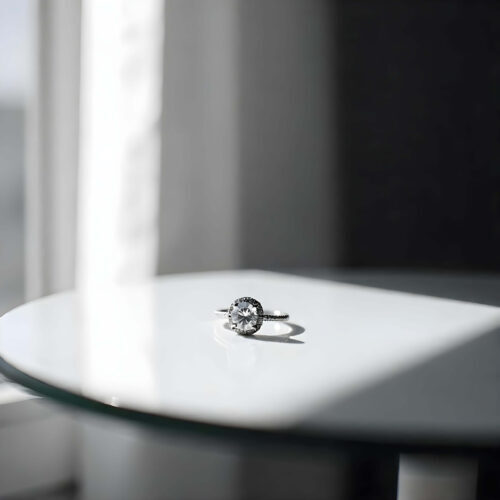 When it comes to positioning your light sources, the key is to create a balanced lighting setup. Avoid harsh shadows and overexposed areas by adjusting the light sources and angles. Experiment with different lighting setups to find what works best for your jewelry pieces. Remember, lighting jewelry is a matter of personal preference, so don’t be afraid to try new things and adjust as needed.
When it comes to positioning your light sources, the key is to create a balanced lighting setup. Avoid harsh shadows and overexposed areas by adjusting the light sources and angles. Experiment with different lighting setups to find what works best for your jewelry pieces. Remember, lighting jewelry is a matter of personal preference, so don’t be afraid to try new things and adjust as needed.
Soft, natural light can be achieved by placing your jewelry near a window or outside during golden hour. This soft, warm light is ideal for capturing the intricate details of your jewelry pieces. When using natural light, pay attention to the direction of the light source and adjust accordingly to avoid harsh shadows.
Another benefit of using natural light is that it can create a sense of depth and dimensionality in your images. By positioning your jewelry at an angle to the light source, you can create a sense of volume and texture. Experiment with different angles and positions to find what works best for your jewelry pieces.
Understanding Light Sources for Jewelry Photography
Understanding the different types of light sources used in jewelry photography is crucial for capturing stunning images. There are several types of light sources, including natural light, artificial light, and mixed lighting. Natural light is ideal for capturing soft, warm tones, while artificial light provides more control over the lighting setup.
 Artificial light, on the other hand, offers more control over the lighting setup, allowing you to adjust the intensity, color temperature, and direction of the light. This makes it ideal for capturing bold, dramatic effects and highlighting specific details of your jewelry pieces.
Artificial light, on the other hand, offers more control over the lighting setup, allowing you to adjust the intensity, color temperature, and direction of the light. This makes it ideal for capturing bold, dramatic effects and highlighting specific details of your jewelry pieces.
Mixed lighting combines the benefits of both natural and artificial light, offering flexibility and precision. This can be achieved by using a combination of natural and artificial light sources, or by using a single light source with adjustable settings. Mixed lighting allows you to create a variety of effects, from soft, warm tones to bold, dramatic highlights.
Using Natural Light for Jewelry Photography
When it comes to capturing stunning photographs, natural light is an excellent choice. Soft, natural light can be achieved by placing your jewelry near a window or outside during golden hour. This soft, warm light is ideal for capturing the intricate details of your jewelry pieces.
 One of the benefits of using natural light is that it can create a sense of depth and dimensionality in your images. By positioning your jewelry at an angle to the light source, you can create a sense of volume and texture. Experiment with different angles and positions to find what works best for your jewelry pieces.
One of the benefits of using natural light is that it can create a sense of depth and dimensionality in your images. By positioning your jewelry at an angle to the light source, you can create a sense of volume and texture. Experiment with different angles and positions to find what works best for your jewelry pieces.
Another benefit of using natural light is that it can create a sense of soft focus, which is ideal for capturing delicate details and textures. By positioning your jewelry close to the light source, you can create a soft, romantic effect that highlights the intricate details of your jewelry pieces.
When to Use Artificial Light for Jewelry Photography
While natural light is ideal for capturing soft, warm tones, artificial light can be used to create bold, dramatic effects and highlight specific details of your jewelry pieces. Artificial light offers more control over the lighting setup, allowing you to adjust the intensity, color temperature, and direction of the light.
 Artificial light is ideal for capturing high-contrast images, where bold, dramatic highlights and shadows are desired. This is particularly effective for capturing bold, modern designs and statement pieces.
Artificial light is ideal for capturing high-contrast images, where bold, dramatic highlights and shadows are desired. This is particularly effective for capturing bold, modern designs and statement pieces.
Another benefit of using artificial light is that it allows for greater flexibility and control over the lighting setup. This is ideal for capturing complex, layered compositions, where multiple light sources are needed to create a visually appealing image.
Techniques for Accentuating Jewelry Details
When it comes to capturing stunning jewelry photography, highlighting specific details is crucial. This can be achieved by using lighting techniques that accentuate the intricate details and textures of your jewelry pieces.
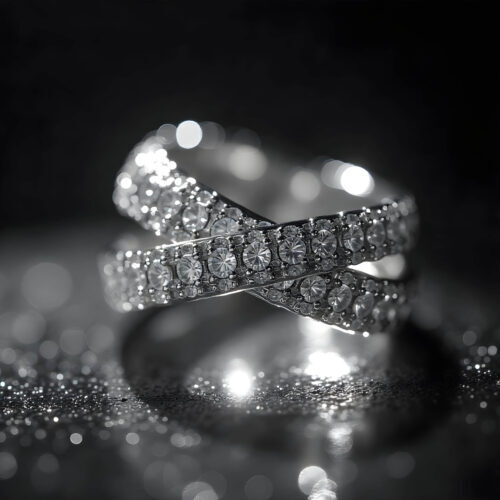 One technique is to use a combination of light sources to create a sense of depth and dimensionality. This can be achieved by using a primary light source and a secondary light source to create a sense of volume and texture.
One technique is to use a combination of light sources to create a sense of depth and dimensionality. This can be achieved by using a primary light source and a secondary light source to create a sense of volume and texture.
Another technique is to use a single light source with adjustable settings to create a variety of effects. This can be achieved by adjusting the intensity, color temperature, and direction of the light to create a sense of drama and highlight specific details.
Using Shadows to Make Jewelry Pop
When it comes to capturing stunning jewelry photography, contrast is key. Shadows can be used to create a sense of drama and highlight specific details of your jewelry pieces.
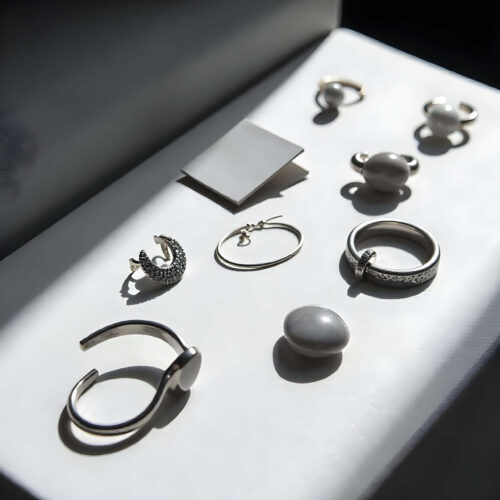 One technique is to use a combination of light sources to create a sense of contrast. This can be achieved by using a primary light source and a secondary light source to create a sense of volume and texture.
One technique is to use a combination of light sources to create a sense of contrast. This can be achieved by using a primary light source and a secondary light source to create a sense of volume and texture.
Another technique is to use a single light source with adjustable settings to create a variety of effects. This can be achieved by adjusting the intensity, color temperature, and direction of the light to create a sense of drama and highlight specific details.
Using Black Backdrops for Jewelry Photography
When it comes to capturing stunning jewelry photography, backdrops play a crucial role. A black backdrop can be used to create a sense of depth and dimensionality, and to make your jewelry pieces stand out.
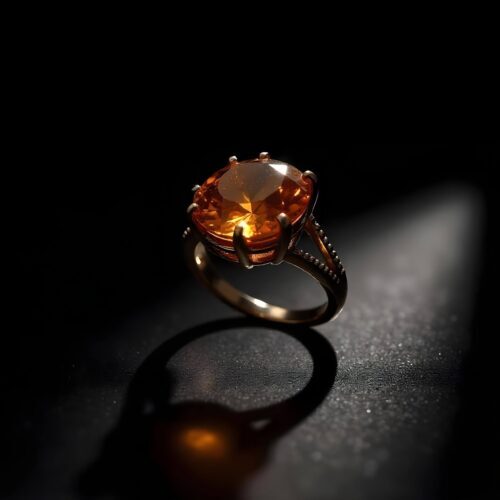 One technique is to use a black backdrop with a single light source to create a sense of drama and highlight specific details of your jewelry pieces. This can be achieved by positioning your jewelry close to the light source and using a low ISO and a wide aperture.
One technique is to use a black backdrop with a single light source to create a sense of drama and highlight specific details of your jewelry pieces. This can be achieved by positioning your jewelry close to the light source and using a low ISO and a wide aperture.
Another technique is to use a combination of light sources and backdrops to create a sense of complexity and depth. This can be achieved by using a primary light source and a secondary light source to create a sense of volume and texture and using a black backdrop to create a sense of contrast.
How to Create a Professional-Looking Lighting Setup
Creating a professional-looking lighting setup requires a deep understanding of lighting techniques and a willingness to experiment. The key is to create a balanced lighting setup that highlights the intricate details and textures of your jewelry pieces.
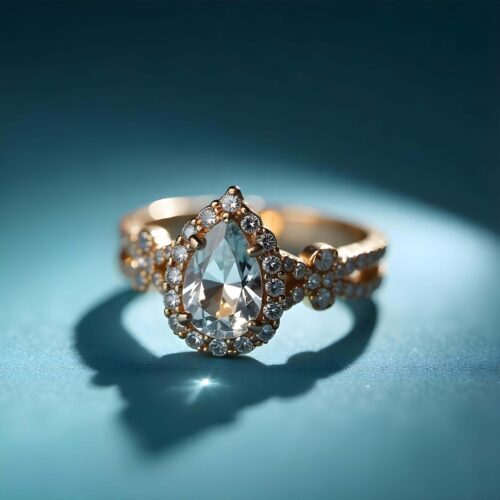 One technique is to use a combination of light sources to create a sense of depth and dimensionality. This can be achieved by using a primary light source and a secondary light source to create a sense of volume and texture.
One technique is to use a combination of light sources to create a sense of depth and dimensionality. This can be achieved by using a primary light source and a secondary light source to create a sense of volume and texture.
Another technique is to use a single light source with adjustable settings to create a variety of effects. This can be achieved by adjusting the intensity, color temperature, and direction of the light to create a sense of drama and highlight specific details.
Using Reflectors to Enhance Jewelry Photography
When it comes to capturing stunning jewelry photography, reflectors can be used to enhance the lighting setup and create a more visually appealing image. Reflectors can be used to bounce light onto specific areas of your jewelry pieces, creating a sense of depth and dimensionality.
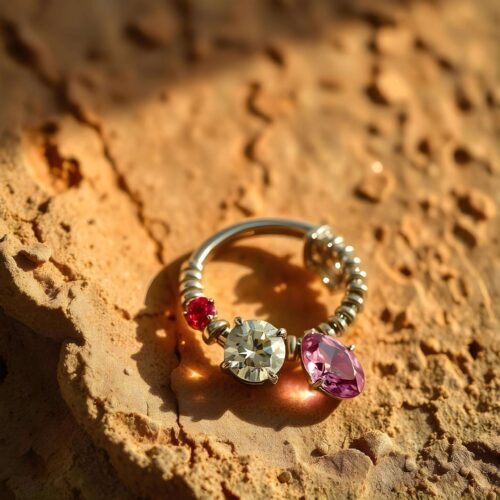 One technique is to use a combination of light sources and reflectors to create a sense of complexity and depth. This can be achieved by using a primary light source and a secondary light source to create a sense of volume and texture and using a reflector to bounce light onto specific areas of your jewelry pieces.
One technique is to use a combination of light sources and reflectors to create a sense of complexity and depth. This can be achieved by using a primary light source and a secondary light source to create a sense of volume and texture and using a reflector to bounce light onto specific areas of your jewelry pieces.
Another technique is to use a single light source with a reflector to create a sense of drama and highlight specific details. This can be achieved by positioning your jewelry close to the light source and using a low ISO and a wide aperture to create a sense of depth and dimensionality.
How to Edit Your Jewelry Photos for Perfection
The final step in capturing stunning jewelry photography is to edit your images. This requires a deep understanding of image editing software and a willingness to experiment. The key is to enhance the colors, contrast, and brightness of your images to create a visually appealing final product.
One technique is to use image editing software to adjust the colors and contrast of your images. This can be achieved by using a combination of exposure, contrast, and color grading tools to create a visually appealing final product.
Another technique is to use image editing software to adjust the brightness and saturation of your images. This can be achieved by using a combination of brightness, saturation, and clarity tools to create a visually appealing final product.
Capturing stunning jewelry photography requires a deep understanding of lighting techniques and a willingness to experiment. By mastering the essential lighting tips outlined in this article, you can create visually appealing images that showcase your jewelry pieces in the best possible light. Remember to experiment with different lighting setups and techniques to find what works best for your jewelry pieces, and don’t be afraid to try new things and adjust as needed. With practice and patience, you can create stunning jewelry photographs that showcases your pieces in the best possible light.
Conclusion
Capturing stunning jewelry photography hinges on a deep understanding of lighting techniques and a willingness to experiment. By mastering the essential lighting tips outlined in this article, you’ll elevate your images and showcase your jewelry pieces beautifully. Whether using natural light, artificial light, or a combination, remember to play with different setups and techniques to discover what works best for your unique pieces. With practice and patience, you’ll achieve visually appealing results that highlight the intricate details and brilliance of your jewelry, ultimately creating photographs that stand out.
Read next: Shine Enhancement Techniques for Jewelry Retouching

